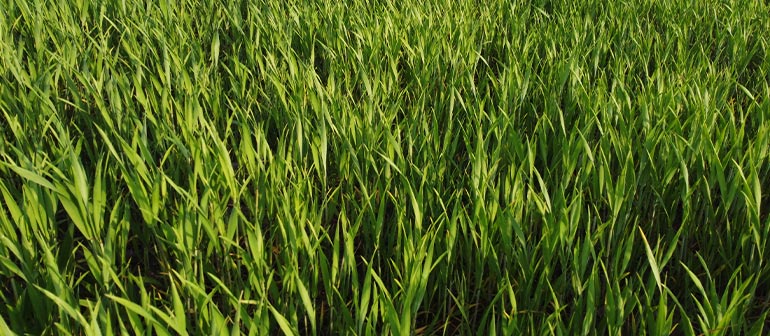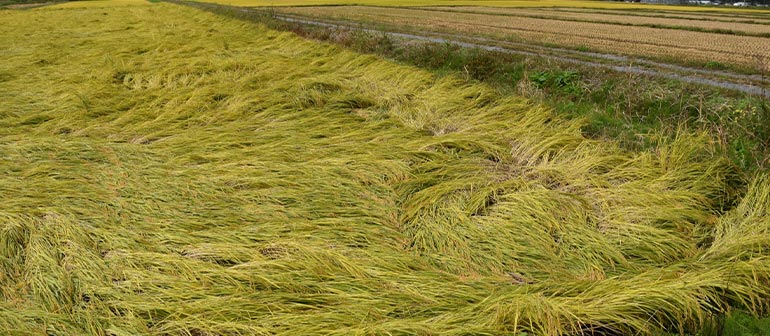
Green Manure Agriculture

There is an image of what agriculture should be.
Recognizing the Importance of Sustainable Agriculture
Have you ever heard of green manure farming? No, it is not a way to make money out of manure, but it does involve utilizing it. Green manure farming involves growing crops specifically to till into the soil, which helps to revitalize it. This process is significant in promoting soil health and increasing crop yields.
Rather than relying on chemical fertilizers, green manure farming is a natural way to improve soil fertility. It involves planting crops like legumes and grasses that fix nitrogen in the soil, preventing soil erosion and promoting biological activities. This practice also helps to control weeds and pests without the use of harmful chemicals.
Green manure farming is not a new concept, but it has gained renewed interest in recent years as people become more aware of the importance of sustainable agriculture. However, with any practice, there are also challenges. It can be difficult to select the right crops and manage timing, but with proper education and awareness, these issues can be overcome.
The future of agriculture lies in promoting practices that create a greener and cleaner environment. Green manure farming plays a significant role in achieving this goal and ensuring the sustainability of our planet.

What is Green Manure Farming?
Green manure farming may sound like a fancy term, but it’s simply the practice of growing crops that are meant to be tilled back into the soil to enhance soil fertility. In other words, you’re farming to support more farming. It’s like planting a seed of a healthy future for your crops.
Green manure crops serve a dual purpose of providing soil nutrition and reducing weed populations. They are typically fast-growing and mature within a short period, making them ideal for your busy farming schedule. Most green manure crops start to flower after 4-5 weeks and can be cut down before they set seed.
With green manure farming, you’re not only replenishing the soil, but you’re also working on the prevention of soil erosion. The plants’ deep roots hold the soil in place, which helps to reduce soil loss from heavy rainfall and wind. In addition, green manure crops reduce the frequency of crop rotation, allowing one to have more time to manage their farm activities, with a potential increase in crop yields.
Green manure farming also supports biodiversity by promoting soil biological activity, restoring the ecological balance, and reviving soil quality. With green manure farming, you are creating natural fertilizers capable of retaining nutrients that can be broken down in the soil to boost crop growth.
Green manure farming is a simple but delicate farming technique. It requires careful consideration of the timing for planting and the duration periods for the green manure crops. With good timing and the correct nutritional choice, you’ll increase the chances of a good harvest in the long run. Green manure farming is an affordable and practical solution to promote sustainable agriculture and increase yield production.

Types of Green Manure Crops
Green Manure Farming involves the cultivation of crops that are specifically grown for the purpose of being plowed back into the soil while still green. This replenishes the nutrients of the soil and improves its overall quality, ultimately leading to better crop yields.
There are three main types of green manure crops, including leguminous crops, non-leguminous crops, and grasses. Leguminous crops, such as peas and beans, have the added benefit of being able to fix nitrogen in the soil by forming a symbiotic relationship with bacteria. Non-leguminous crops, such as oats and rye, have deep root systems that loosen and aerate the soil. Furthermore, grasses like barley and wheat work well in limiting erosion and tightening soil structure.
Each type of green manure crop has its own unique benefits. Leguminous crops provide high amounts of nitrogen to the soil, which is essential for plant growth. Non-leguminous crops replenish the soil with essential minerals, such as potassium and phosphorus. Additionally, grasses help build organic matter that increases soil fertility.
It is essential to choose the right combination of crops for the required soil conditions. This calculation can be challenging. For example, hot and dry areas should opt for drought-tolerant crops such as sunn hemp and cowpeas. In comparison, cold-winter climates must use rye and vetch.
Therefore before planting green manure crops, it is crucial to consider the benefits of each type and to choose the combination based on the required needs of the soil. Green manure farming is all about improving soil quality that, in turn, benefits crop production. So choose wisely for a fruitful yield!
Method of Green Manure Farming
Green manure farming is a sustainable and eco-friendly way of cultivating crops that not only improves soil fertility but also increases yields. It involves the use of specific crops that are sown and then turned back into the soil to provide nutrients and improve soil quality.
Preparation of the soil is a crucial step in green manure farming. The soil needs to be prepared in advance to support the growth of green manure crops. It involves removing weeds, adding organic matter, and providing adequate drainage.
Sowing green manure crops is the next step. Farmers should choose the right green manure crop according to the soil type and climate. Leguminous crops, non-leguminous crops, and grasses are the most commonly used types of green manure crops.
After sowing, the green manure crop needs to be managed correctly to ensure optimal growth and to prevent pest infestation. The crop is then harvested before it reaches maturity and incorporated back into the soil. The incorporation process releases nutrients and organic matter, which can improve soil fertility and enhance soil biological activity.
Green manure farming also involves integrating green manure crops into the cropping system. This means that the farmer needs to choose the right timing for planting the main crop after the green manure crop has been incorporated. This ensures that the main crop will grow optimally and produce high yields.
Green manure farming has many advantages, including improving soil fertility, reducing soil erosion, promoting soil biological activities, controlling weeds and pests, and increasing yields. However, there are some challenges that farmers face, such as selecting the right green manure crop, managing the crop, and choosing the correct timing for incorporation and planting.
Despite the challenges, Green Manure farming is an essential aspect of sustainable agriculture. It promotes a greener and cleaner environment while providing farmers with a low-cost method for improving soil fertility and boosting crop yields. By choosing the proper green manure crop and managing it effectively, farmers can improve the quality of their soil and reap the benefits of this eco-friendly farming practice.
Advantages of Green Manure Farming
Green manure farming is a unique agricultural practice that has gained immense recognition across the globe in recent times. The benefits of this farming technique outweigh any possible drawbacks.
One significant advantage of green manure farming is the improvement of soil fertility. The use of green manure crops such as leguminous crops replenishes nitrogen in the soil and improves soil moisture retention capabilities. Incorporating green manure crops into the main crop cycle ensures that crops have access to more nutrients, leading to better yields.
Green manure farming also helps in reducing soil erosion. The presence of ground cover through the growth of green manure crops prevents soil loss through rainfall and wind. The cover vegetation provides protection to the topsoil, creating a layer that holds the soil and nutrients in place.
Promoting soil biological activities is another advantage of green manure farming. The presence of green manure crops in the soil encourages the growth of microorganisms that help in breaking down organic matter into usable nutrients for plants. This process of soil nitrogen fixation provides natural soil amendments and works wonders on crop yields.
Green manure farming is also effective in controlling weeds and pests, especially when integrated with other sustainable farming methods. Mechanically or chemically controlling pests and weeds can produce several undesirable side effects in the environment and crop quality. In contrast, green manure farming suppresses weed growth by smothering the weed’s growth with the ground cover.
Finally, the most desirable advantage of green manure farming is the resulting increase in crop yield. By releasing more nutrients into the soil and preventing soil loss, green manure farming has been proven to increase crop yield by up to 25%.
Green manure farming is more than just an agricultural practice. It is an environmentally sustainable technique that can help farmers to grow healthier crops, improve yield, and preserve the environment for future generations.

Challenges in Green Manure Farming
Green Manure Farming has many benefits but like everything else, it has its own set of challenges. One of the biggest challenges in Green Manure Farming is selecting the right green manure crops. The selection of crops should depend on the main crops and the needs of the soil. It’s not rocket science, but it requires some thought. Farmers should always pick the right types of green manure crops to experience the benefits that green manure farming brings.
Managing Green Manure Crops is another challenge that farmers face. It’s crucial to ensure that the crops are grown properly and maintained to get the desired results. Farmers must be mindful of the duration that they want to grow the crops for and when to harvest them for incorporation into the soil. Yes, it can be a bit tedious, but the rewards that come along with it are worth it!
Timing plays an important role in incorporating green manure crops into the soil. Farmers must ensure that green manure crops are planted and harvested at the right time. The incorporation of green manure crops not only fertilizes the soil but also suppresses weed growth. It is essential to ensure the crops are incorporated before planting the main crops. Timing is everything!
Lack of Awareness and Knowledge of Green Manure Farming is also a significant challenge. Farmers must know the right techniques of implementing green Manure Farming to reap the most benefits. It’s a process that requires the farmer’s commitment and effort. Many solutions are available, but farmers should invest their time and energy into learning the right techniques.
In a nutshell, Green Manure Farming isn’t all sunshine and rainbows. It takes time, commitment, and effort to implement it correctly. The crop selection, management, and timing all play an important role in getting the desired results. Farmers need to be aware and knowledgeable of the process to truly experience the benefits of Green Manure Farming.
Future of Green Manure Farming
Green manure farming plays a crucial role in sustainable agriculture. It enhances soil fertility, reduces soil degradation and erosion, and promotes biological activity. Green manure crops also help in weed and pest control, eventually increasing yield. The integration of green manure crops into cropping systems helps in diversifying agriculture and improving soil structure.
Apart from this, green manure crops help the environment in many ways. The plants absorb carbon dioxide from the atmosphere and convert it into organic matter, thereby contributing to reducing greenhouse gas emissions. The crops also improve the soil’s water-holding capacity and reduce nutrient leaching.
The future of green manure farming looks promising as it aligns with the principles of sustainable agriculture and a greener and cleaner environment. With proper awareness and knowledge, more farmers can adopt green manure farming and contribute to mitigating climate change and sustainable development.

Conclusion
So, there you have it – green manure farming! We’ve talked about what it is, different types of green manure crops, and the method of farming. We’ve even delved into the advantages and challenges of this type of farming, as well as the future of it.
In summary, green manure farming is a sustainable method of farming that uses certain crops to improve soil fertility, control pests and weeds, and increase yields. Leguminous crops, non-leguminous crops, and grasses can be used as green manure crops, each with their own benefits.
While there are some challenges to green manure farming, such as selecting the right crops and managing them, the advantages far outweigh them. Incorporating green manure into your crops can improve your soil’s fertility, promote biological activities, and reduce soil erosion, all while increasing crop yields.
Green manure farming has an immense importance in sustainable agriculture, and it is a step in the right direction towards a greener and cleaner environment. So, what are you waiting for? Start incorporating green manure into your farming practices and reap the benefits!

